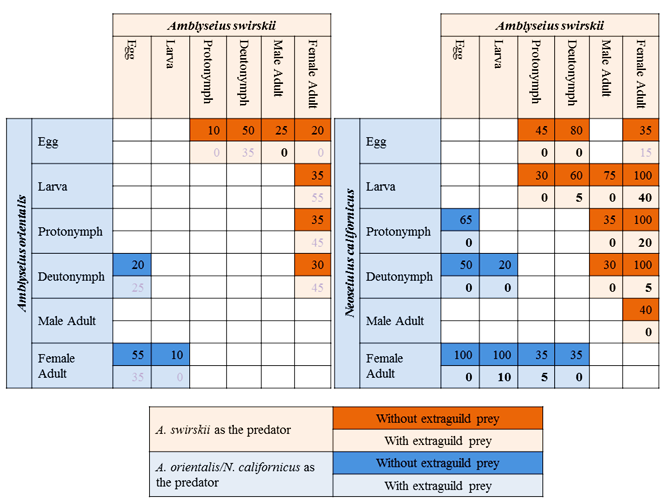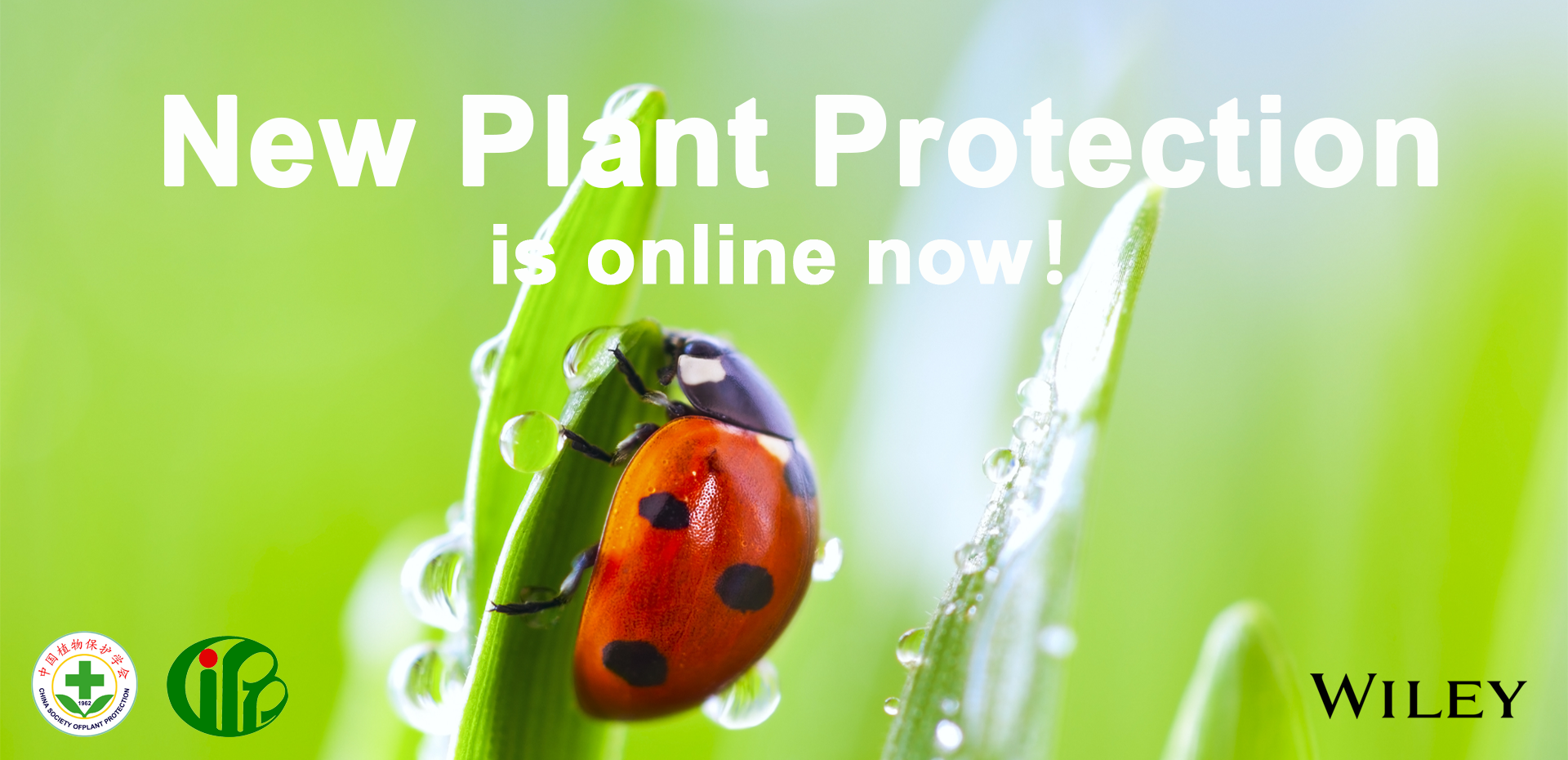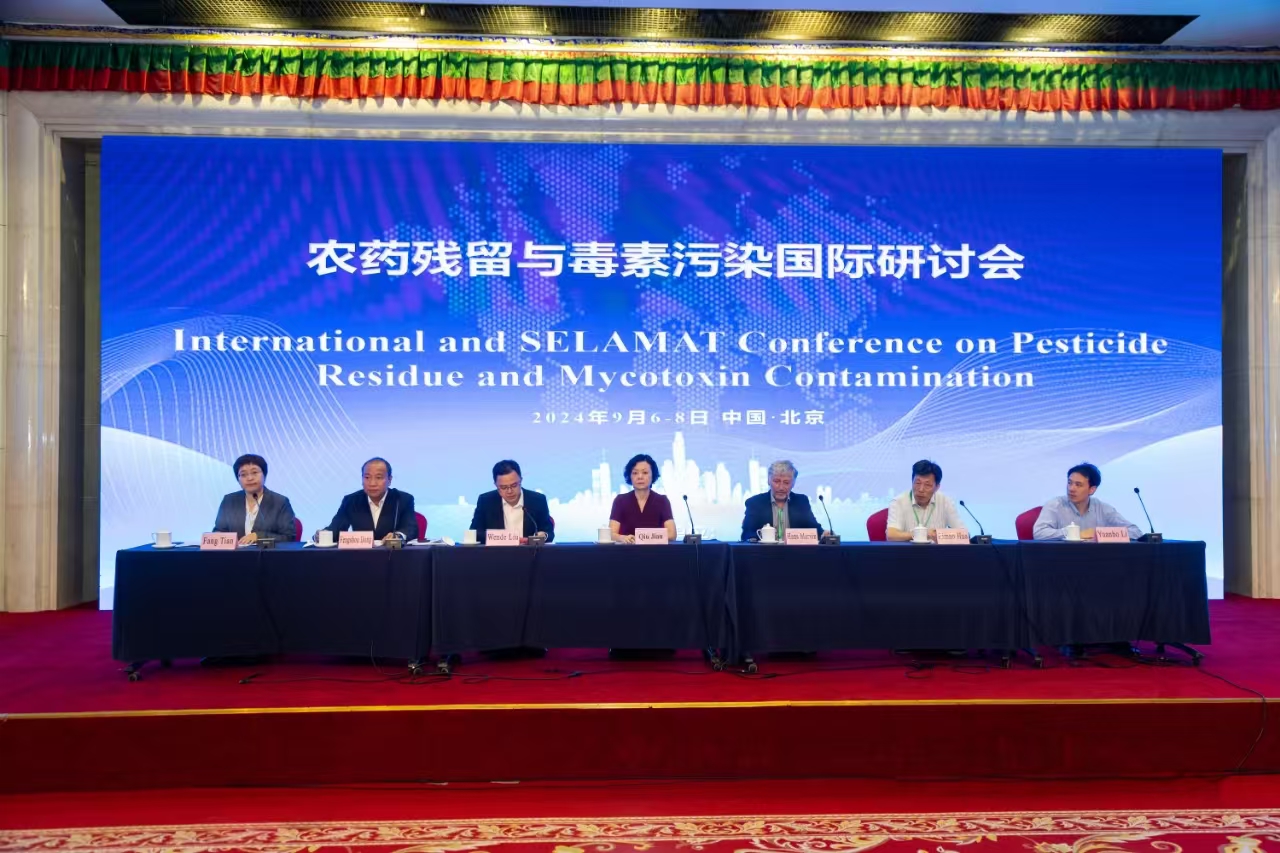Intraguild predation between Amblyseius swirskii and two native Chinese predatory mite species and their development on intraguild prey
Amblyseius swirskii, native to the east and southeast Mediterranean region, is a successful biological control agent of whiteflies. Its successes in Europe and North America initiated our intent to introduce this species to China for whitefly control. Considering that introduced natural enemies may have non-target effects on native species that share similar biological niches, it is necessary to investigate IGP between A. swirskii and native Phytoseiid species to evaluate the environmental risks of introducing A. swirskii to China. In the present study, we investigated intraguild predations (IGP) between each stage of A. swirskii and each stage of two Phytoseiid species that occur in China, Amblyseius orientalis and Neoseiulus californicus. Recently, the related research results have been published in Scientific Reports.
When there was no whitefly egg provided as the extraguild prey, IGP between A. swirskii and A. orientalis, and between A. swirskii and N. californicus, was observed in 10 and 20 out of 35 combinations, respectively. When IGP was observed, A. swirskii was the intraguild predator in 70% and 65% cases of A. orientalis and N. californicus predation, respectively. When whitefly eggs were provided as the extraguild prey, IGP between A. swirskii and N. californicus decreased greatly, but no significant decrease of IGP was observed between A. swirskii and A. orientalis. Amblyseius swirskii was able to complete development on both heterospecific predatory mites, and both heterospecific predatory mites completed their development on A. swirskii.
Based on our results, A. swirskii is a stronger competitor compared either to A. orientalis or N. californicus. In addition, A. swirskii could have greater negative impact on A. orientalis than on N. californicus. Therefore it is not possible to deduce whether A. swirskii and A. orientalis populations are able to coexist without negative consequences, based on the coexistence of A. swirskii and N. californicus in the Mediterranean region. Possible negative impact of A. swirskii on A. orientalis populations is herein attributed to 3 main concerns: 1) A. swirskii is a stronger competitor than A. orientalis, 2) extraguild prey does not lead to significant decrease of IGP levels between the two species, and 3) A. orientalis is an equally good or better food source for the development of A. swirskii than B. tabaci. In contrast, A. swirskii appears to be a less appropriate prey for A. orientalis.

Intraguild predation (IGP) levels between A. swirskii and the two native predatory mite species without or with extraguild prey (whitefly eggs). Fonts in grey indicated that IGP level did not decrease significantly when extraguild prey was provided.
This study was financially supported by the Special Fund for Agro-scientific Research in the Public Interest (200903032), Technology System of Modern Agricultural Industry in Beijing (blvt-11), and the China National Basic Research Program (2013CB1276024).
For more information, please visit:
http://www.ncbi.nlm.nih.gov/pubmed/26972164
By Jiale Lv & Xuenong Xu
xnxu@ippcaas.cn
-
 China-Laos Training Workshop on Integrated Management of Destructive Crop Pests and Diseases Successfully held in Laos
China-Laos Training Workshop on Integrated Management of Destructive Crop Pests and Diseases Successfully held in Laos -
 New Plant Protection: New challenge and new opportunity for plant protection
New Plant Protection: New challenge and new opportunity for plant protection -
 International and SELAMAT Conference on Pesticide Residue and Mycotoxin Contamination Held in Beijing
International and SELAMAT Conference on Pesticide Residue and Mycotoxin Contamination Held in Beijing -
 CAAS President Meets Chairman of ASEAN FAW Taskforce
CAAS President Meets Chairman of ASEAN FAW Taskforce
